Multiple varieties and hybrids of coral bells (Heuchera spp.) are available worldwide. These beautiful perennial plants produce lovely bell-shaped, petite flowers rich in nectar that attract all sorts of birds and butterflies into your garden. These plants would make beautiful additions to your woodland garden and great companion plants for many other plants. You only have to decide which companion plants for coral bells you love the most.
Some great companion plants for your coral bells include hostas, astilbe, ferns, impatiens, hellebores, daylilies, iris, and azaleas. These are excellent choices for several reasons, including the color of the leaves and flowers, similar growing preferences, and height differences.
Heuchera can put on quite a splash of color. One of the best characteristics of a coral bell plant is its beautiful foliage, ranging in color from green to gold, lime green, rose, purple, and more. When choosing plants to grow next to your coral bells, you will need to factor in a few things, including the growth habits of both plants, whether or not the plants will complement each other, and whether there will be an issue regarding the different heights of the plants.
8 Favorite Companion Plants For Coral Bells
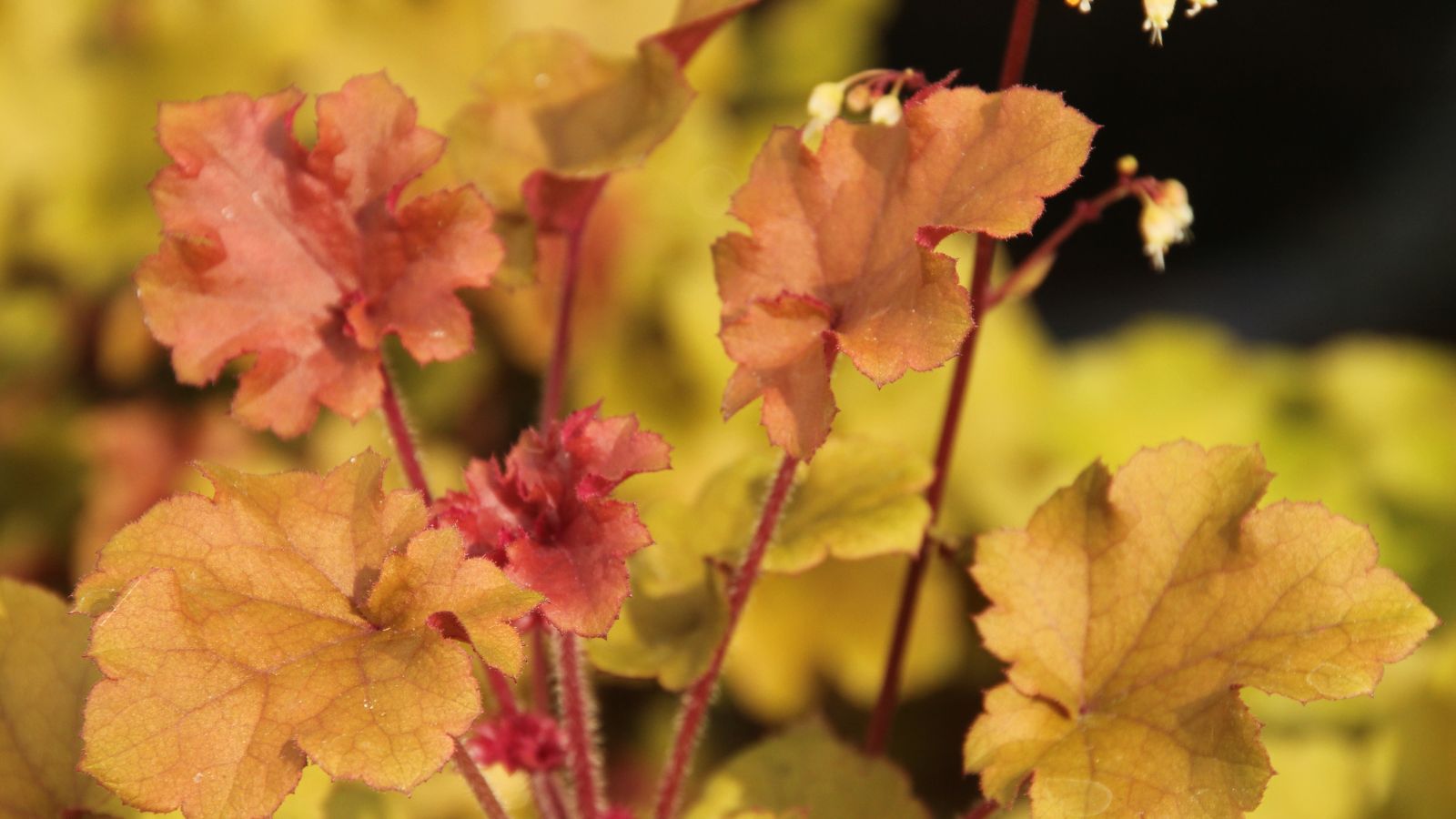
Image credit: Depositphotos.
Coral bells prefer full to partial sunlight, rich, moist, well-drained soils, and USDA hardiness zones 4a – 9a. They will grow 8 – 18 inches tall and 12 – 24 inches wide. When looking for companion plants for your coral bells, you will want to ensure that they will highlight each other with complementary colors, foliage, flowers, and textures.
The following eight plants would do well planted next to or in the same garden as your coral bells. Let’s look at why they are good choices.
1. Hostas (Hosta spp.)
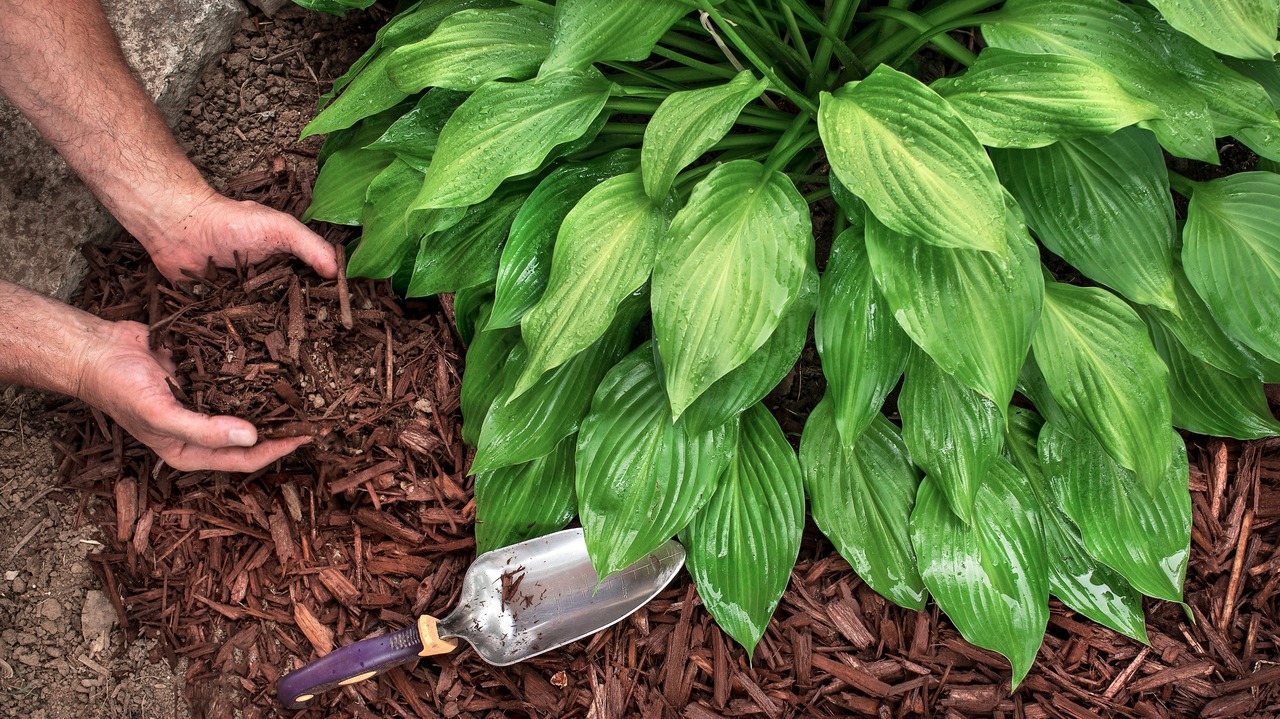
Image Credit: Shutterstock.
Hostas are trendy garden additions loved by most gardeners. These perennials are relatively easy to grow and care for, preferring partial to full shade, rich, fertile, well-draining soil, and grow optimally in USDA hardiness zones 3 – 9. They produce flower spikes every summer in shades of lavender, white, and pink, depending on the variety.
These plants are the perfect companions for your coral bells as they produce beautiful large foliage in various shades. When placing these two plants together, you can expect to see a sensational array of textures and colors. Hostas are also of short stature, like the coral bell, making them both beautiful options for your container display or herbaceous garden border.
2. Astilbe (Astilbe spp.)
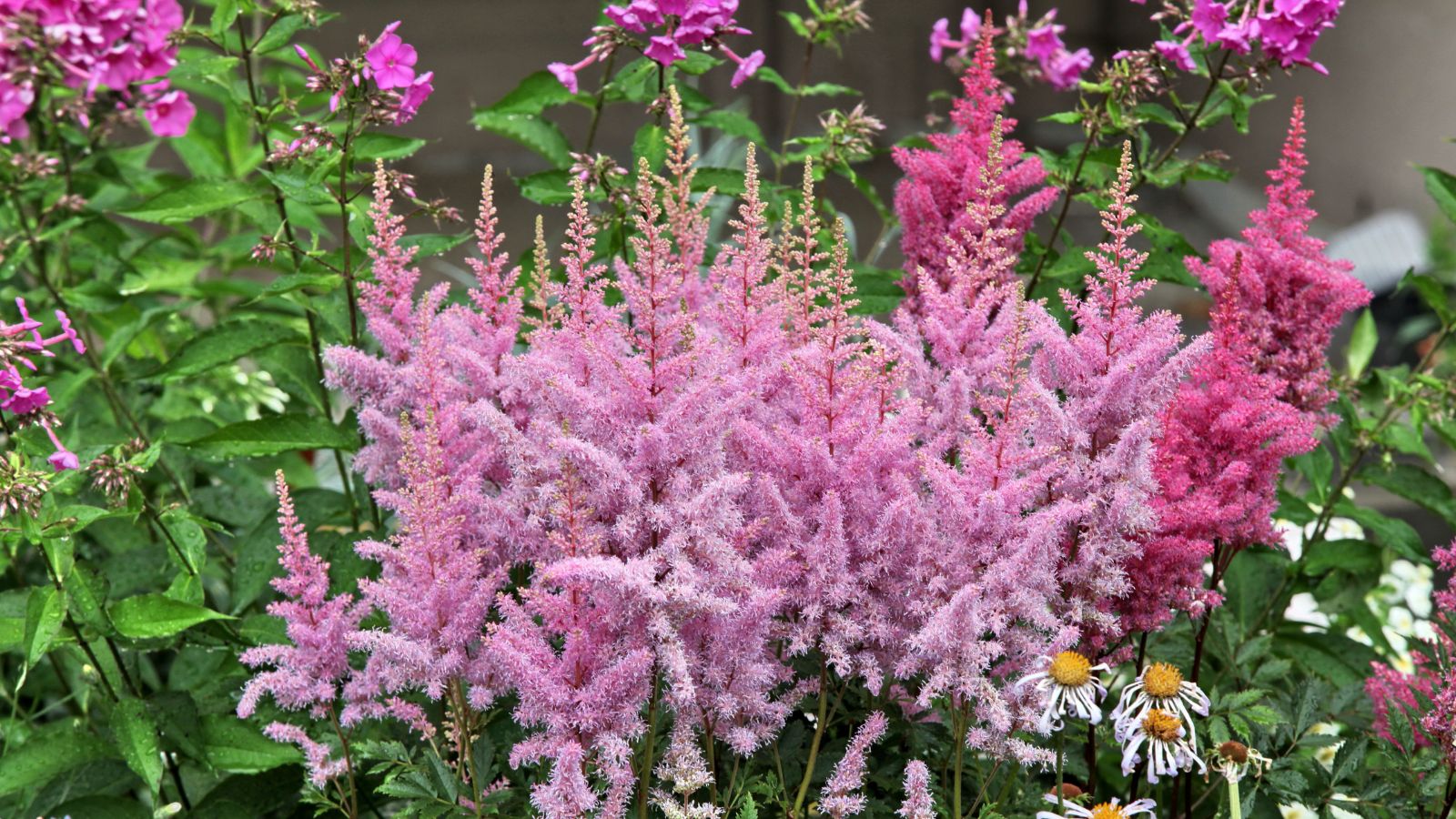
Image credit: YAY Images.
Another easy-to-grow perennial is the astilbe. These lovely plants produce spectacular flowers in plume-like arrays and shades of white, purple, pink, and red, extended out on stiff, tall stalks. Astilbes prefer full sunlight to partial shade, loamy, moist soils, and grow optimally in USDA hardiness zones 3 – 8.
If you want to create the perfect companion garden, choose the dwarf or medium-height varieties of astilbe for your coral bell garden. These beautiful plants’ airy foliage will provide a lush contrast to coral bells, creating a stunning vista of different textures and colors while still allowing you to care for them in the same way due to their similar growing conditions.
3. Japanese Painted Fern (Athyrium niponicum)

Image Credit: YayImages
The Japanese painted fern is a beautiful plant with silvery, triangular leaves called fronds. These ferns are variegated and appear grayish-green with purplish midribs. They prefer partial to full shade, moist, well-drained soils, and USDA hardiness zones 3 – 8. This perennial plant will be a great addition to any garden.
The beautiful purplish midribs will provide a lovely partnership with your coral bells. These two plants share similar growing requirements making them perfect companions, and their coloring and textures will create a beautiful garden vista wherever you choose to plant them.
4. Impatiens (Impatiens spp.)
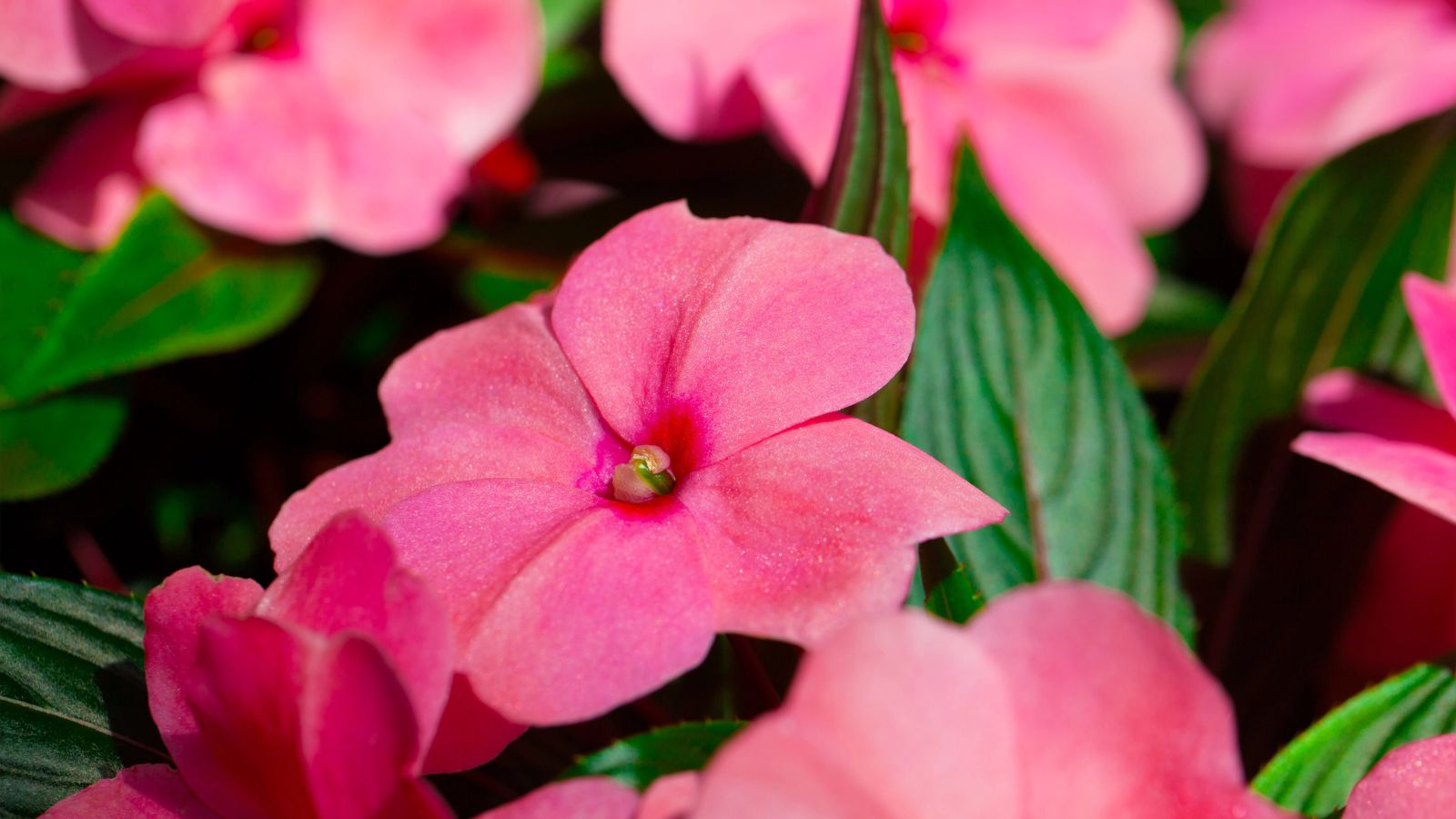
Image credit: Depositphotos.
Impatiens are trendy annual plants due to their ability to survive in a shady spot and their non-stop summer blooming ability. Depending on your variety, you can expect white flowers, or a variety of other colors, such as pink, red, purple, violet, and yellow. Impatiens prefer partial to full shade, rich, well-draining soil and can grow as perennials in USDA hardiness zones 10 – 11 or as annuals elsewhere.
The two plants (impatiens and coral bells), will provide a lovely colorful view in your shade garden. Impatiens will add some extra color to your heuchera garden during the summer months when they flower. Their beauty and growing preferences make them excellent choices for companion planting.
5. Hellebore (Helleborus spp.)

Image credit: Depositphotos.
You might know hellebore by its other common name, Lenten rose. Hellebore sports spectacular evergreen thick foliage that forms a low-lying clump. The leaves are palm-like and lobed. This perennial is one of the earliest to bloom, putting out its rose-like blossoms in early spring. This plant likes full sun in the winter and shade in the summer with moist, well-drained soil. It grows optimally in USDA hardiness zones 3 – 9.
Depending on the variety, hellebores make an excellent companion plant for your coral bells with their white, yellow, purple, and pink flowers. This companionship works well as both plants have similar growing preferences, so caring for them together is easy. Hellebores and coral bells will look lovely planted next to one another in a shady garden spot.
6. Daylilies (Hemerocallis spp.)
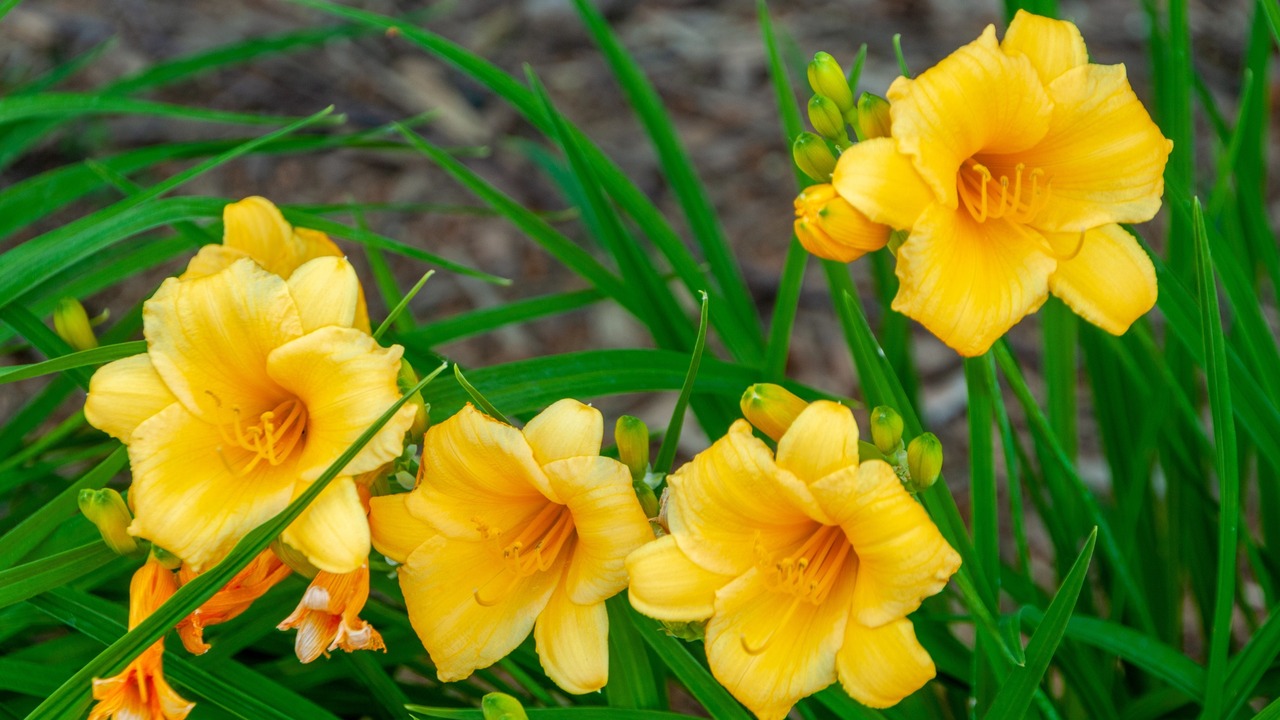
Image Credit: Shutterstock.
The daylily is an excellent choice for any garden, pathway, border, or anywhere. The bulbs produce grasslike mounds from which long stems emerge. At the end of the stems, clusters of flowers bloom. These plants prefer full sun to partial shade, medium loamy, fertile soil, and grow optimally in USDA hardiness zones 3 – 10.
The daylily foliage looks somewhat like a green waterfall and will add texture when planted next to your coral bells. Daylilies flowers only last about 24 hours, hence the name daylily, but the bulbs will continue to produce flower-bearing stems all summer. They come in many sizes that yield different flower colors, so you can choose the best ones to match your coral bell variety.
7. Iris (Iris)
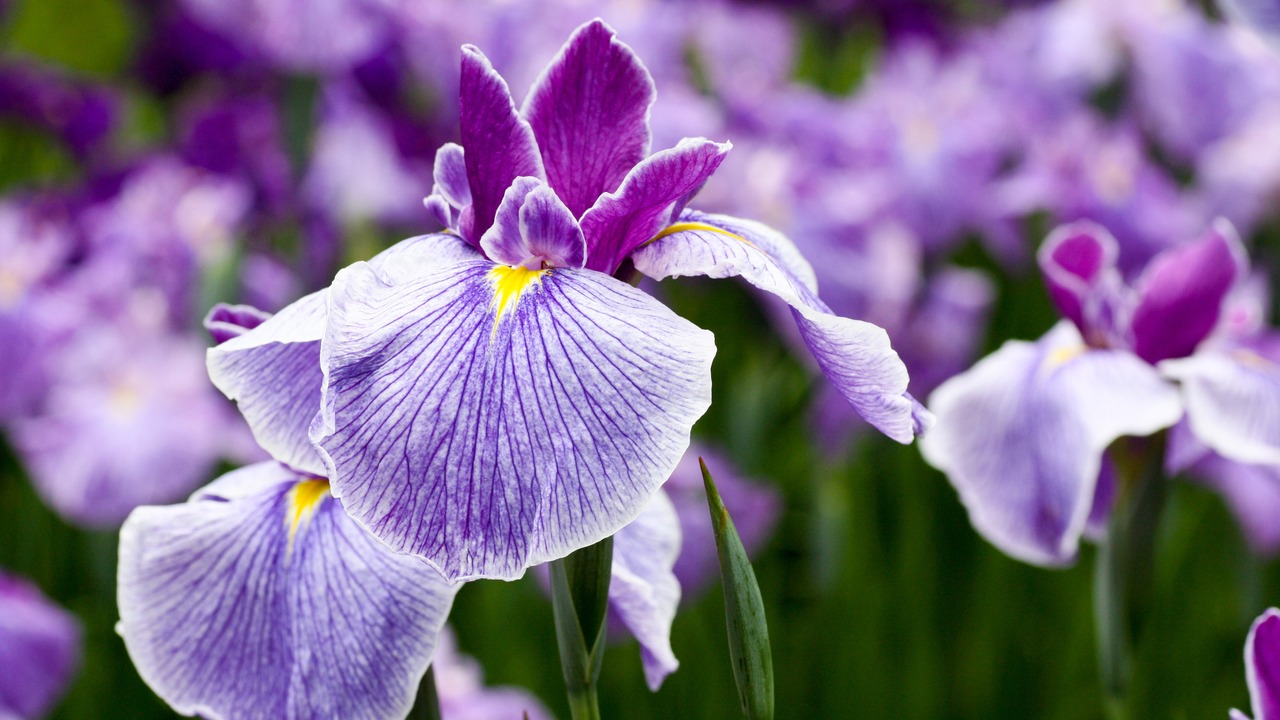
Image Credit: Shutterstock.
There are approximately 300 different species of Iris. These perennial bulbs produce spectacular flowers in various colors, including shades of blue, purple, yellow, and white. They prefer full sunlight conditions, well-draining, rich, moist soils, and grow optimally in USDA hardiness zones 3 – 9.
Iris make excellent companions for coral bells, as their flowers and foliage add extra texture and color. Depending on the variety of iris you choose, you might want to consider planting them behind your coral bells as they can grow taller.
See more companion plants for iris.
8. Azalea (Rhododendron spp.)
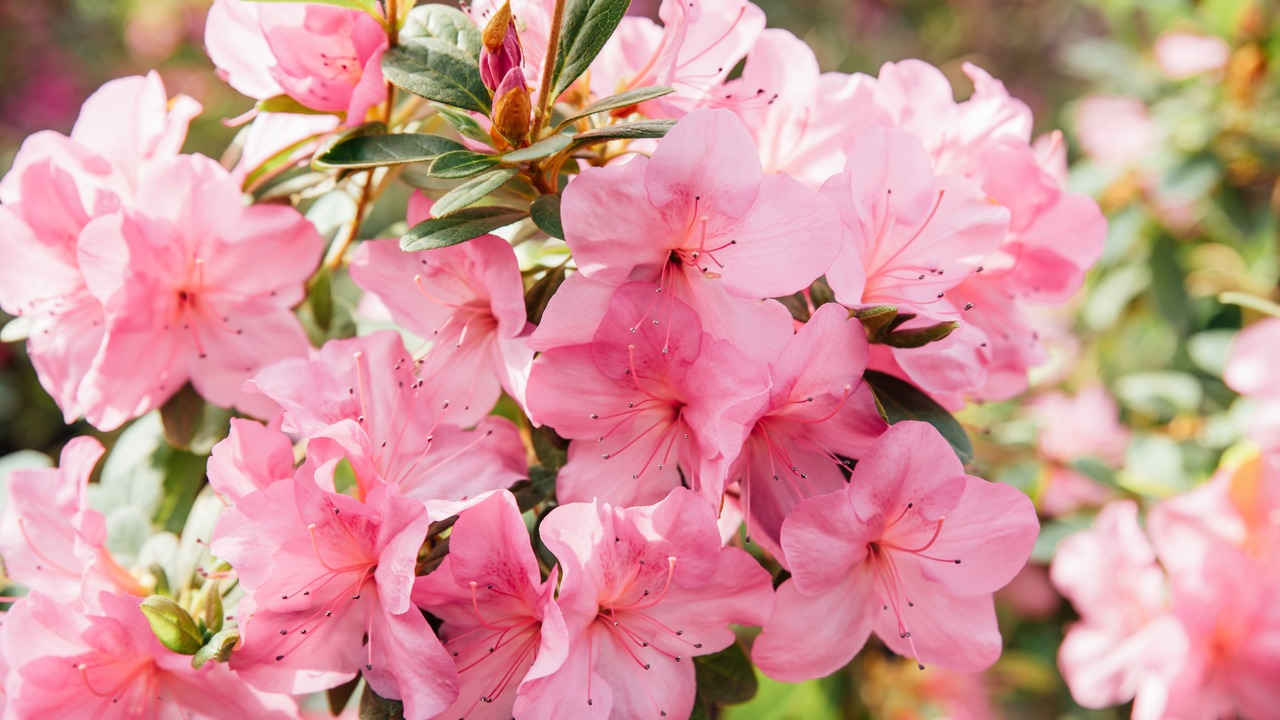
Image Credit: Shutterstock.
Azaleas can offer you some spectacular flowers in mid to late spring. The dwarf variety of azalea can stay under three feet, producing clusters of bell-shaped or tubular flowers in various colors, including orange, white, pink, peach, and red. These shrubs prefer light, well-drained soils and grow optimally in USDA hardiness zones 6b – 8a, depending on your variety.
Dwarf varieties are best for pairing with heuchera. Before choosing an azalea make sure that your USDA zone is correct. If you find one that can grow in your area, you will find that the azalea accompanies the coral bell perfectly as their colors and textures go wonderfully together.
Coral bells are beautiful plants that thrive in full to partial sunlight. Their beautifully textured and colored leaves, as well as their dainty flowers, make any garden that much more spectacular. Some lovely plants out there can be perfect for companion planting with your coral bells and will enhance their colors and textures or grow well with similar growing preferences.
Read more
Beautiful Plants That Belong Beside Hostas
These Annual Flowers Will Keep Your Garden Glowing All Summer



Companion Planting Guide (Including 7 Benefits Of Polyculture)
Tuesday 23rd of August 2022
[…] Companion plants for coral bells […]